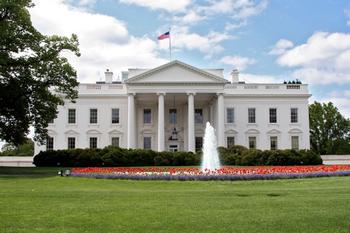Latest Conference Articles

With 8 Weeks Left Before Brexit, Stakeholders Urge Action
Kelly Davio
January 31 2019
Medicines For Europe Regulatory and Scientific Affairs Conference
One of the most time-sensitive topics at this week’s Medicines for Europe 18th Regulatory and Scientific Affairs Conference, held January 31 to February 1 in London, United Kingdom, was preparing for the United Kingdom’s upcoming withdrawal from the European Union.

Regulators and Drug Makers Call for Greater International Regulatory Alignment
Kelly Davio
January 31 2019
Medicines For Europe Regulatory and Scientific Affairs Conference
On the opening day of the Medicines for Europe (MFE) 18th Regulatory and Scientific Affairs Conference, held January 31 to February 1 in London, United Kingdom, representatives of the generics and biosimilars industry and regulators gathered to discuss the opportunities and challenges posed by the globalization of medicine development and manufacture.

Is It Time for a Global Reference Product for Biosimilars?
Allison Inserro
January 26 2019
On the last day of the 14th Biosimilars Summit, held January 22-23, 2019, in Alexandria, Virginia, the head of the FDA practice at Avalere discussed her point of view that enabling a global reference product for biosimilars would provide global access for patients.

Managing Risk Can Ensure Biosimilar Rewards, Expert Says
The Center for Biosimilars Staff
January 24 2019
Despite the challenges inherent in biosimilars, they have a fairly high probability of success, said Edric Engert, managing director of Abraxeolus Consulting, in a presentation at the 14th Biosimilars Summit, held January 22-23, 2019, in Alexandria, Virginia.

Businesses Have a Financial Stake in Promoting Biosimilars, Employer Groups Say
Allison Inserro
January 24 2019
At a panel discussion at the 14th Biosimilars Summit, held January 22-23, 2019, in Alexandria, Virginia, representatives of employer groups discussed the role that businesses have in driving the discussion about raising awareness and adoption of biosimilars. Employer groups can help overcome barriers, such as patient fears and misinformation, and create confidence about using biosimilars, speakers said.

Creating and Sustaining Best Practices in Launching Biosimilars
Allison Inserro
January 24 2019
Before launching into a discussion of what firms need to consider when identifying “best practices” to get a biosimilar up and running in a new market, Mylan’s global commercial head for biologics and insulin gave a quick history lesson about how far the field has come in a keynote address at the 14th Biosimilars Summit, held January 22-23, 2019, in Alexandria, Virginia.

What's New in Medicare Part B for Biosimilars
Allison Inserro
January 23 2019
The current administration in Washington, DC, is one of the most active when it comes to policy and regulation that affects biosimilars, said a presenter who recapped recent changes for the attendees at the 14th Biosimilars Summit, held January 22-23, 2019, in Alexandria, Virginia.

At J.P. Morgan Healthcare Conference, Mylan, Momenta, and AbbVie Discuss the Role of Biosimilars
Kelly Davio
January 10 2019
Annual J.P. Morgan Healthcare Conference
During the 37th annual J.P. Morgan Healthcare Conference held January 7-10 in San Francisco, California, drug makers Mylan and Momenta explained the role that biosimilars will play in their growth, while AbbVie outlined its strategy for managing direct biosimilar competition.

FDA's Scott Gottlieb, MD, Highlights Biosimilars Initiatives in J.P. Morgan Keynote Address
Samantha DiGrande
January 9 2019
Annual J.P. Morgan Healthcare Conference
During the 37th annual J.P. Morgan Healthcare Conference held January 7-10 in San Francisco, California, FDA Commissioner Scott Gottlieb, MD, delivered a keynote address encompassing his goals for the direction of the FDA in the coming year.

At J.P. Morgan, Amgen and Sanofi Balance Novel Drugs and Biosimilars, Alexion Hopes to "Convert" Patients
Kelly Davio
January 9 2019
Annual J.P. Morgan Healthcare Conference
The second day of the 37th Annual J.P. Morgan Healthcare Conference saw presentations from drug makers Amgen and Sanofi—both of whom produce both innovator products facing biosimilar competition as well as biosimilars of competitors’ products—as well as from Alexion, which is defending its flagship product from advancing biosimilar challengers.
